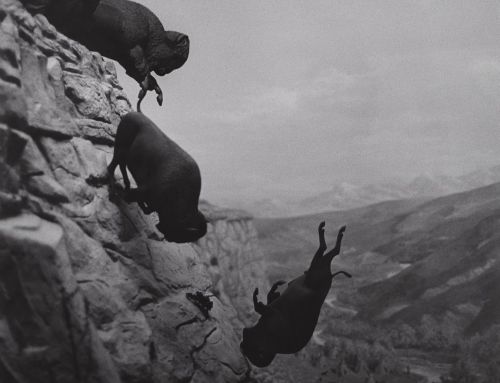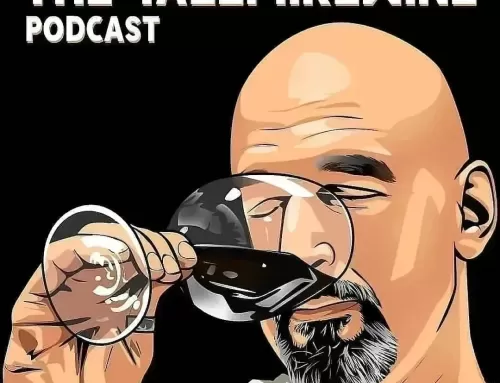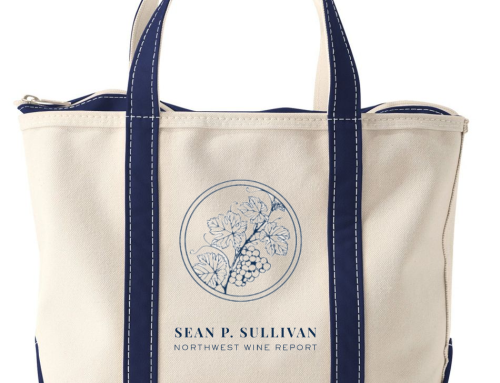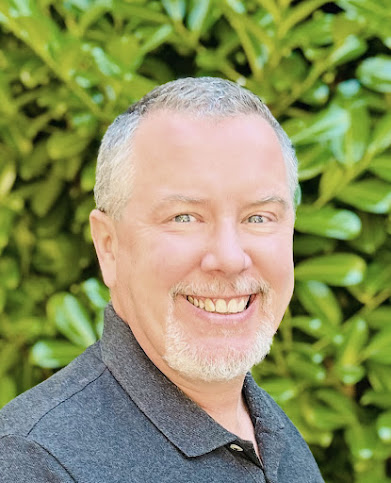
Things are no different in Washington where Chardonnay often leads the state in terms of production, as it did in 2012, just edging out Riesling and Cabernet Sauvignon (2013 numbers are not yet available). Yet here, high quality bottles remain relatively scarce (read an exploration of Washington’s ‘Chardonnay Paradox’ in Edible Seattle here). Recently, however, Chardonnay’s fate seems to be changing in the state with not one, not two but three different wineries starting Chardonnay-only projects (!) in recent years.
The first to release its wines was Array Cellars. A project of Henry Smilowicz, Array made its first vintage in 2010 and in 2011 produced three wines: one Dijon Clone Chardonnay from Otis Harlan Vineyard in the Yakima Valley, one from Conner Lee Vineyard in the Columbia Valley, and the third a Washington State blend from Celilo, Stillwater Creek, Dionysus, and Jewett Creek. The wines are made by consulting winemakers Brian Carter and Robert Takahashi. The Otis Vineyard wine in particular is an attention getter – one of the best bottles in the state.
The next project – with wines just being released – comes from Chris Gorman of Gorman Winery. Gorman has long made his Big Sissy Chardonnay. However, he is now launching a Chardonnay-only project called Ashan Cellars. For Gorman, the name is part sound, part biblical name, and – of course – the fact that The Doors’ Jim Morrison sings, “Ashen lady give up your vows” in Roadhouse Blues doesn’t hurt.
“I’ve been thinking about it for about three years now, since I fell in love with making Big Sissy,” Gorman said of the project.
At Ashan, Gorman is producing three vineyard designated Chardonnays: one from Celilo Vineyard in the Columbia Gorge; one from Conner Lee Vineyard in the Columbia Valley; and one from Kestrel Vineyard in the Yakima Valley. To select the vineyards, Gorman focused on old vine fruit, using vines planted in 1972 (Kestrel), 1973 (Celilo), and 1991 (Conner Lee’s oldest Chardonnay block).
Intriguingly, the 2012 Gorman Winery Big Sissy Chardonnay contains fruit from all three sites and so affords the opportunity to taste something of a union of the three (read review here). The Ashan wines are each treated slightly differently with the Celilo Vineyard wine aged in 40% new French oak while both the Kestrel and Conner Lee wines were aged in 100% new French oak but with different coopers. All of them were fermented with native yeasts. Each of the three Ashan releases are thrilling wines made in Gorman’s trademark, bold style with plentiful viscosity and texture. Like the vineyards they come from, they are distinct and each demanding of attention.
The final project – not yet officially named or with released wines – comes from Charles Smith. Smith will also be producing three different vineyard designated Chardonnays (do you sense a theme here?), focusing largely on higher altitude sites.
Of great intrigue here, Smith hired rock star winemaker (can a winery really have two rock star winemakers??) Brennon Leighton, previously of Woodinville’s EFESTE, in part to head up the project in addition to other responsibilities at the winery. Leighton showed a particularly skilled touch with the grape during his tenure as white winemaker at Chateau Ste. Michelle and also at EFESTE with the Lola Chardonnay from Evergreen Vineyard.
“I’ve been interested in high elevation sites for quite a while,” Leighton said when I spoke with him about the project. “Doing higher elevation you can crop lower and get the concentration up without having a lot of sugar ripening or losing acidity.” Leighton’s experience at Chateau Ste. Michelle gave him a perfect perspective on just which sites might work best. “It’s about going out there and trying to make the best wines we can possibly make,” Leighton said of the project.
No word as of yet on when these wines will be released (the first wines were made in 2012) or what the release prices will be, but with Smith’s full weight behind them, it’s hard to imagine they won’t command a premium price. Barrel tasting the wines earlier this year, they will be more than worth the wait. They are among the most exciting Chardonnays I have sampled from Washington to date.
So, is Washington Chardonnay really making a comeback? Well, again, it’s hard to call it that because it is and has been Washington’s most produced variety. Still, the grape has been going through a period of ennui in Washington and when three different wineries start notable Chardonnay-only projects within a couple years of each other, it’s clear that Chardonnay is back.
Promisingly, these projects display something different for Washington: a commitment to producing high quality white wines at higher price points that only a handful of wineries here have gone after. You could probably count on two hands white wines from Washington $40 and above with $55 the ceiling. And this is a very good thing for Washington if these winemakers succeed and with the track records of Gorman and Charles Smith, there’s no reason to think they won’t.
As I wrote earlier this year in an article for Vineyard & Winery Management, Washington growers and winemakers have been caught in a vicious cycle. Consumers haven’t shown a willingness as of yet to pay top dollar for Washington whites. As a result, many growers and winemakers can’t afford to pay as much attention to them as they do their reds because it doesn’t make sense financially. The result is a lot of good white wine that fails to be great or an abandonment of white wines altogether by many wineries.
If these new projects can demonstrate that consumers are willing to pay more for Washington whites if the quality is there, might others follow suit? You betcha. This would allow growers to give more attention in the vineyard and winemakers to put more of a focus on the wines in the winery. And that’s a good thing for everybody. If so, Washington may (finally) have more high quality white wines to go with its abundance of top quality reds. Here’s to that!
Array Cellars Chardonnay Dijon Clone Otis Harlan Vineyard Yakima Valley 2011 $32

Array Cellars Chardonnay Washington 2011 $25

Array Cellars Chardonnay Conner Lee Vineyard Columbia Valley 2011 $32

Ashan Winery Chardonnay Celilo Vineyard Columbia Gorge 2012 $45
A nuanced wine with candy corn, lemon butter, spice, and mineral notes. The palate is textured, rich yet restrained with lemony acidity running throughout and a lingering finish. A beautiful expression of Chardonnay. 100% Chardonnay. Barrel fermented using native yeast. Aged sur lees for 9 months in 40% new French oak. 13.3% alcohol. (Wine Enthusiast review to be published in subsequent issue).
Ashan Winery Chardonnay Kestrel Vineyard Yakima Valley 2012 $45

Ashan Winery Chardonnay Conner Lee Vineyard Columbia Valley 2012 $45








I'd love to see these higher elevation site wines from Brennan, I still have a leaning towards the Chardonnay coming out of the Willamette Valley compared to some of the pricier Washington Chardonnays. Haven't tried these wines but I'll look out for the Ashan ones.
My question is: Are any of these wines good with food? In my experiences, I have never had a "bold, high octane" Chardonnay (or any Chardonnay with an astronomical 15.2% abv) that paired well with traditionally Chard friendly foods. "Big" and "bold" are not indicators of quality by any means, especially when it comes to a grape like Chardonnay. It seems to me that some Washington winemakers are trying to mimic everything that many have come to ridicule about “bigger is better” California Chardonnays in an attempt to garner high scores from critics to help sell high priced wines. This is pandering at its finest, I suppose. The "Anything But Chardonnay" movement came about largely because of all the heavy handed oak treatments that California winemakers were using. And now we have some of our states "premier" wineries using those exact same winemaking methods, and you're trying to tell us that's a GOOD thing for Washington? I strongly disagree. Wines like Ashan's Conner Lee Chardonnay will do nothing but help reinvigorate the ABC movement, except this time around Washington Chardonnay will no longer be a saving grace, but rather painted with the same brush that California Chardonnays know so well. This is bad for Chardonnay and bad for Washington.
Anon, I agree that higher alcohol wines can sometimes present food pairing challenges. However, that's not to say that all wines need to be made to go with food and if they don't this is a bad thing. Keep in mind that a minority of US consumers have food with their wine according to recent studies. We are somewhat of a wine as cocktail culture. That might change as our wine culture evolves but personally I don't pass judgement on it.
I agree that "big and bold" is not a qualitative indicator – it is a stylistic indicator and was intended as such. The ratings given provide the qualitative assessment. There are obviously a variety of different styles of Chardonnay that are being produced in Washington and elsewhere and I believe that they can each make high quality wines or not. Just because something is "big and bold" doesn't mean it's a good wine but it doesn't mean it's a bad one either. It's just a style.
If you reread the article, I did not say that, "'premier' wineries using those exact same winemaking methods, and you're trying to tell us that's a GOOD thing for Washington?" I was talking about winemakers attempting to elevate both quality and price as stated here:
Promisingly, these projects display something different for Washington: a commitment to producing high quality white wines at higher price points that only a handful of wineries here have gone after…And this is a very good thing for Washington…"
I do strongly believe that growers and winemakers being able to afford to spend more time and effort on their white wine grapes would be a very good thing for the state. Right now it's just not profitable because the grapes and wines command a lower price. As both change, it can have a significant effect on quality.
I seriously doubt the Ashan wines or other referenced here will tilt the scales in Washington so strongly in any one direction. We can and do produce a wide range of styles here and I expect we will continue to. Personally, I celebrate that.
Anon,
Couldn't agree more. The reason why I now drink Chablis and certain Oregon chards instead of CA chard and WA chard is because of the use of new oak. Who wants to drink white wines that taste of butter, popcorn, caramel and show no terroir which gets overshawdowed by oak. I don't know if there is a winemaker in WA that uses as much new oak as Chris Gorman and 100% new oak with chardonnay? You are freakin' crazy!
Thanks Sean & Anon (if that is your real name)
I am glad Chardonnay has sparked so much interest. As a winemaker I now make 5 chardonnays. One completely fermented & aged in Stainless and four barrel fermented. One of which is done in completely neutral oak. Chardonnay is a beautiful grape that benefits from both a lack of handling and a bit of man-handling. There is no one right answer to how to treat this grape… It responds well to both schools. I love Chablis… I also love Kistler…. Maybe I just love the grape. I just don't love the drama.